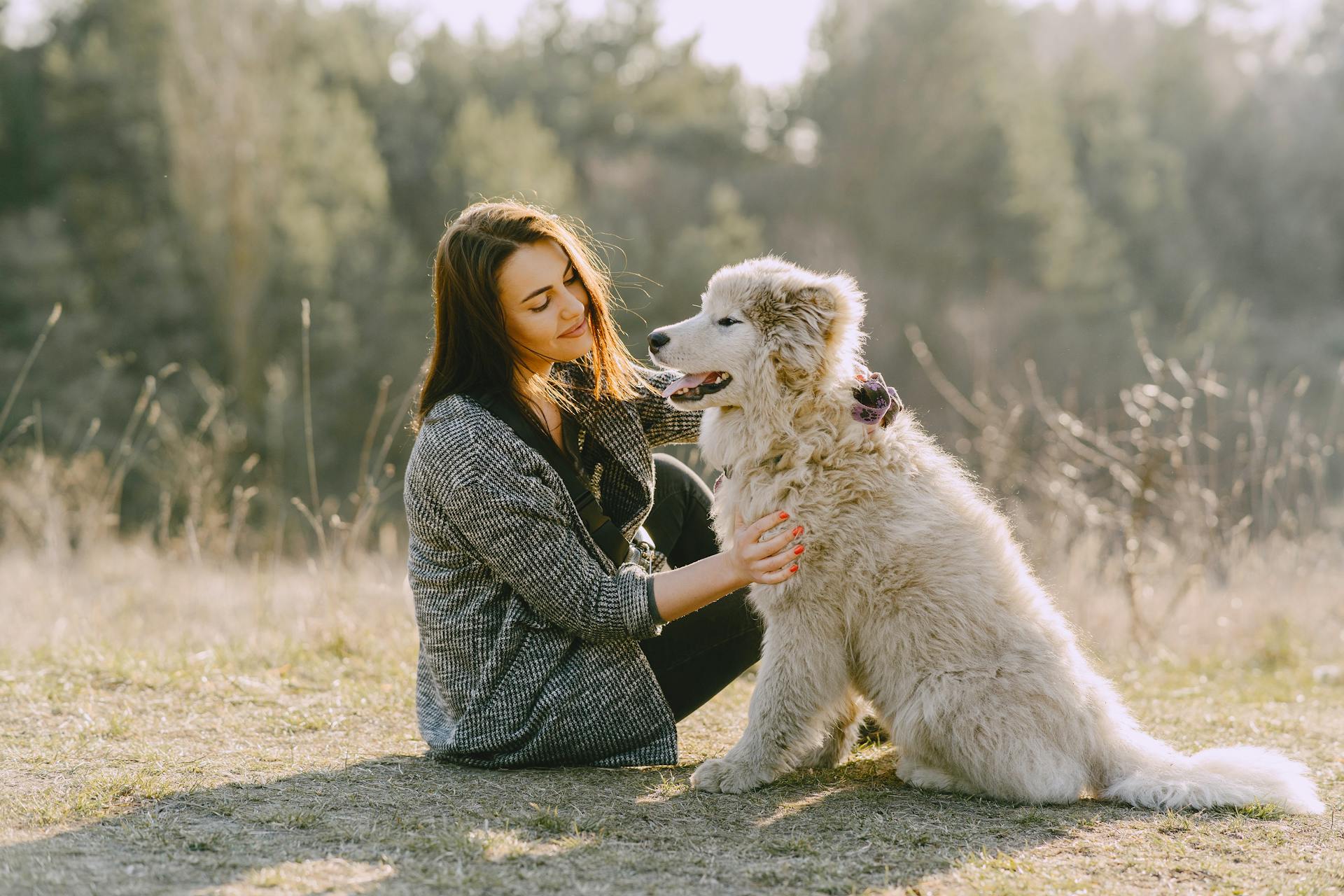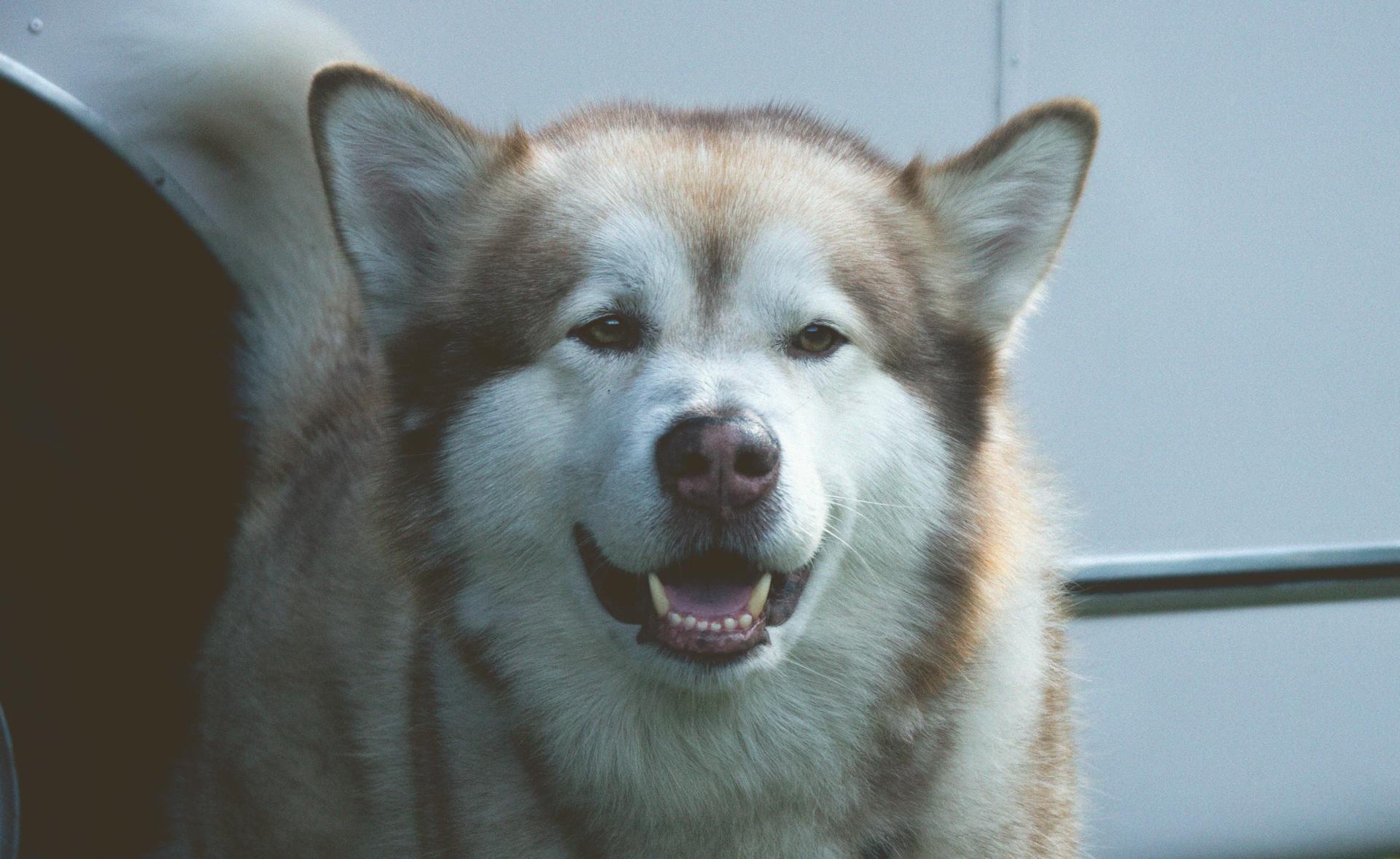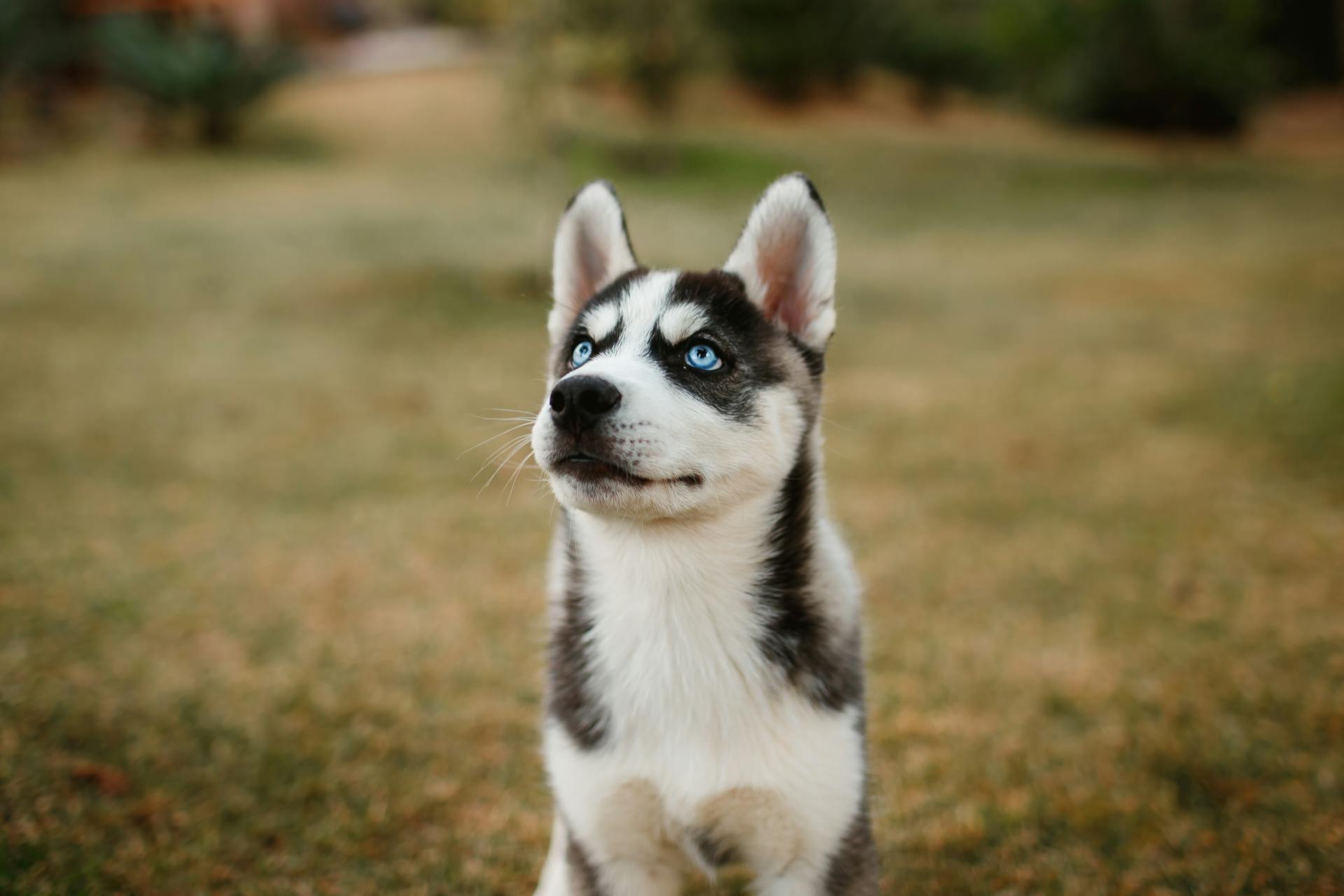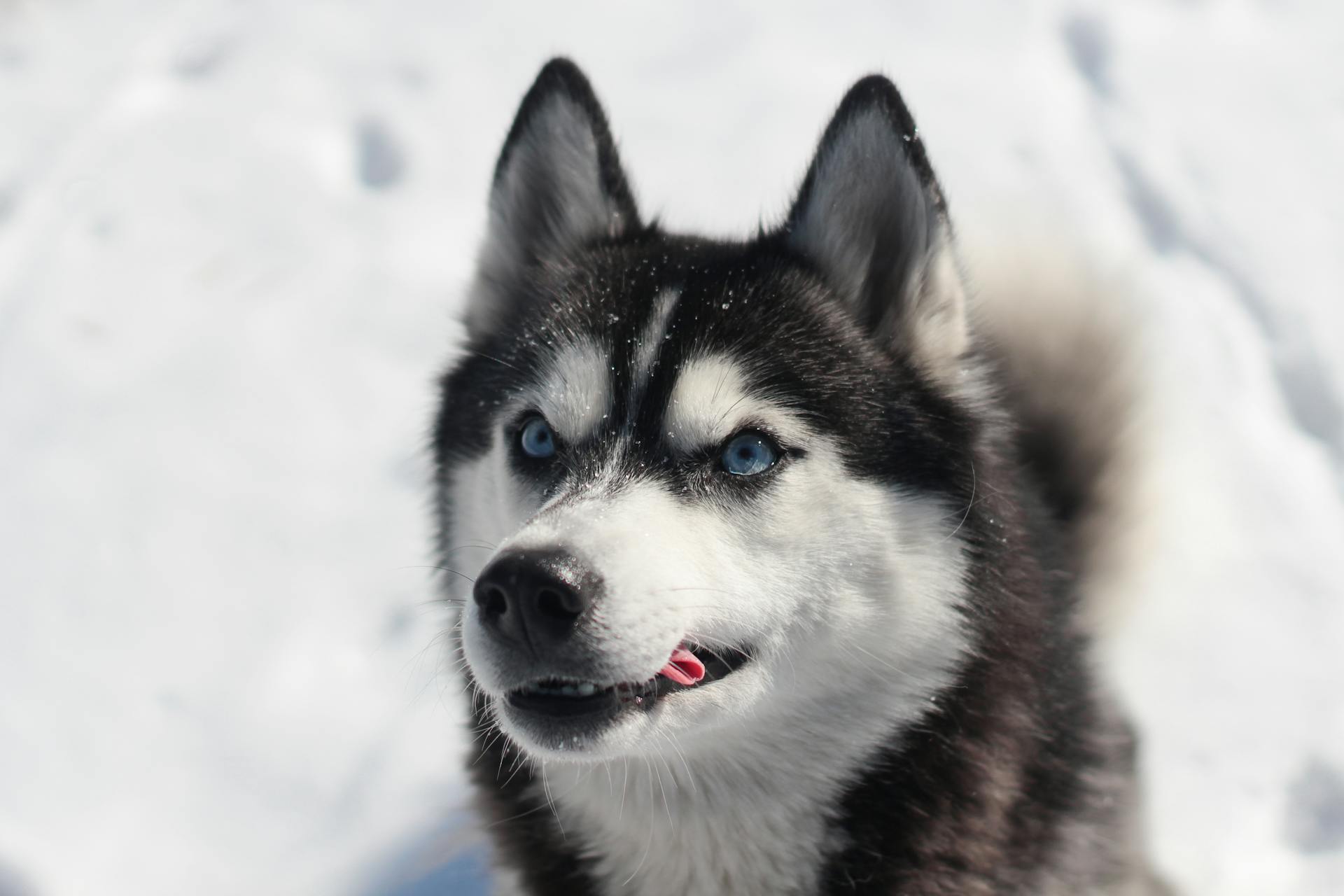
Husky zoomies are a common and entertaining behavior in Siberian Huskies, characterized by sudden bursts of energy and frantic running around the house.
These episodes can last anywhere from a few minutes to over an hour, with some huskies experiencing multiple zoomies sessions in a single day.
Husky zoomies often occur in the morning or after periods of inactivity, suggesting that they're a way for your dog to release pent-up energy.
Some huskies may exhibit zoomies at any time of day, regardless of their activity level.
What Are Zoomies?
Zoomies are a real thing, and they're also known as Frenetic Random Activity Periods or FRAPs. They're a common phenomenon where your dog suddenly becomes extremely energetic and starts running around like crazy.
According to Cornell University College of Veterinary Medicine, zoomies appear as your dog going "warp speed" in an explosion of energy. This is exactly what I've seen with my own husky, who can go from zero to sixty in seconds!
Zoomies are usually a sign of excess energy and pent-up excitement in dogs. It's like they've been cooped up for too long and suddenly need to let loose and have some fun. I've noticed that my husky tends to get zoomies after a long car ride or a playdate with other dogs.
Zoomies can be quite entertaining to watch, but they can also be a bit overwhelming. If you're not prepared, it can be hard to keep up with your dog's frantic energy. But don't worry, it's just a phase, and with some patience and exercise, your dog will calm down eventually.
For more insights, see: How Long Should a Dog Chew on a Bully Stick
Causes and Triggers
Dogs get the zoomies due to a buildup of excess energy, which is released in one big burst. This behavior is absolutely normal in dogs and is known as Frenetic Random Activity Periods, or FRAPs.
Zoomies are more common in younger dogs and tend to decrease in frequency as they get older. Puppies and adolescent dogs are more likely to engage in zoomies due to their high energy levels.
Releasing tension is a common reason for zoomies. This can happen after a stressful event, such as a vet visit or a trip to the groomer. Your dog may blow off steam by zooming around the house.
Getting warmed up is another reason for zoomies. In colder temperatures, your dog may zoom around the house to warm up after being outdoors. They may also do this after a refreshing dip in a chilly pool or lake.
Some dogs get zoomies due to instinct. Times of day like dawn and dusk can elicit a bout of FRAPs in some dogs. This may be due to their built-in clock that tells them to get going.
Here are some common times when dogs get the zoomies:
- After eating: dogs commonly celebrate their meals with an episode of the FRAPs.
- Before bed: your daily routine of getting ready for bed lets your dog know that a long period of rest is imminent.
- After bath time: your dog may shoot off in a celebratory lap of supercharged elevation at being clean.
Stressful situations can also lead to zoomies. This can include meeting unfamiliar dogs or being separated from their owners. Dogs may resort to zoomies to release their nervous energy.
Dogs require mental and physical stimulation to stay engaged and content. When they lack sufficient attention or stimulation, boredom can occur, resulting in restlessness and zoomies episodes.
Puppies going through teething or dogs experiencing physical discomfort may resort to zoomies to alert their owners or escape from discomfort.
Expand your knowledge: Do Rottweilers Turn on Their Owners
Managing Zoomies
Managing zoomies in your husky requires a combination of regular exercise, mental activities, and a serene environment. This helps to prevent overabundance of energy.
Providing a good bedtime routine is also essential. A consistent sleep schedule can help regulate your husky's energy levels and reduce the likelihood of zoomies.
Engaging your husky in positive reinforcement training can also help manage their zoomies. This type of training encourages good behavior and can help redirect their energy.
Redirecting your husky's motion during a zoomie episode can be an effective way to manage the situation. This can be done by running in the direction you want them to go or throwing their favorite toy.
Don't chase after your husky during a fit of zoomies, as this can actually make things worse and make it harder for them to slow down.
For your interest: Dog Training Stop Biting
Safety and Concerns
Zoomies can be a normal and natural behavior in huskies, but it's always a good idea to ensure your dog gets enough exercise and mental stimulation to prevent overexertion.
If your husky tends to go bonkers with zoomies while off-leash, try running away from them instead of running towards them, and reward them with treats to encourage this behavior.
Zoomies can sometimes lead to pet emergencies, especially if your husky bumps into things around the environment a little too much.
To be prepared for emergencies, consider investing in Petcube's Pet Emergency Fund, which provides up to $3000 for up to 6 pets per year, and a 24/7 online vet service.
Are They Safe?
Zoomies can be a normal and fun part of a dog's behavior, but it's essential to ensure they're safe for your furry friend. As long as there are no obstacles in the way, it's fine to let your dog's zoomies run their course.
However, it's crucial to provide a safe environment for your dog to zoom around. A carpeted room or a fully fenced yard can help prevent slipping and falling, and keep delicate trinkets out of reach.

If your dog is prone to zooming frequently, it may be a sign that they're not getting enough physical and mental stimulation. Tracking your dog's zooming behavior can help you understand why they're happening, and make adjustments to provide more exercise and mental stimulation.
Occasional zoomies are fine, but if your dog is zooming all the time, it could be a sign of a bigger problem, such as excessive stress or compulsive behavior. If you have any concerns, consult a certified applied animal behaviorist or a veterinary behaviorist for expert advice.
Intriguing read: Are Zoomies a Sign of a Happy Dog
Aggression During Behavior
Aggressive dog behavior can be a cause for concern, but sometimes it's just a sign of overexcitement. Your pup likely doesn't mean to be aggressive, but in a state of overexcitement, he may exhibit poor behavior.
Aggressive dog zoomies refers to nipping or biting that occurs simultaneously with frantic activity. It's usually nothing to worry about as long as these episodes are not frequent or cause injury.
Mild aggressive tendencies during dog zoomies can be managed by refocusing your dog's energy with a toy or treat. This can prevent further incidents and help your pup calm down.
Some aggressive episodes may be a sign of underlying anxiety or fear, but in the case of dog zoomies, it's often just a phase.
Concerns About My Behavior
You might be concerned about your dog's zoomies when they suddenly go bonkers and stop responding to your commands, especially when you're out on a walk and let them off the lead.
Frequent zoomies could be a sign that your dog needs more exercise and mental stimulation, so try going for longer walks or changing up the routes you take.
Running towards your dog during a zoomie episode can actually encourage the behavior, so instead, try running away from them and carrying some of their favorite treats.
This will likely encourage your dog to follow you, and when they do, give them a tasty reward to reinforce the behavior.
Be mindful that zoomies can sometimes lead to pet emergencies, especially if your dog bumps into things around the environment a little too much.
Understanding and Dealing with Zoomies
Zoomies are a common and natural behavior in huskies, characterized by sudden bursts of energy and rapid movement.
Huskies can experience zoomies at any age, from puppies to seniors, and it's not uncommon for them to zoom around the house multiple times a day.
To manage zoomies, provide your husky with plenty of exercise and mental stimulation, such as long walks and interactive toys, to burn off excess energy.
Mental Stimulation
Mental stimulation is a vital form of exercise for dogs, helping to burn energy and challenge their minds. This can be achieved through various activities, such as using a food dispensing toy or puzzle toy.
Play nose games that require your dog to find a hidden treat can be a great way to mentally stimulate them. These games can be set up in just a few minutes and provide hours of entertainment.
Dogs need mental and physical stimulation to stay engaged and content, and lack of it can lead to boredom. Boredom can manifest as restlessness and Zoomies episodes.
Providing your dog with a metal workout, such as teaching them to go through an obstacle course in the backyard, can be an excellent way to mentally stimulate them. This can be a fun activity to do with your dog and provide exercise for both of you.
Related reading: Zoomies Toy
They're Excited
Dogs may exhibit zoomies when they are overwhelmed with excitement, especially during reunions with their owners after separation.
Dogs just can't contain their excitement in these situations, and it's a great way to bond with your furry friend. I've seen it happen myself - my friend's dog goes wild with excitement whenever she comes home from work, and it's adorable.
Reunions with owners after separation are a common trigger for zoomies. In fact, it's often a sign that your dog is happy to see you and can't wait to play or cuddle.
If you've ever noticed your dog's excitement level spiking during reunions, you're not alone. It's a common phenomenon that's sure to bring a smile to your face.
If this caught your attention, see: How Often Do Dogs Attack Their Owners
Frequently Asked Questions
Do zoomies mean dogs are happy?
Yes, zoomies are a common sign of a happy dog, indicating a playful and energetic mood. Understanding the causes and benefits of zoomies can help you better connect with your furry friend's emotional state.
Sources
- https://www.akc.org/expert-advice/lifestyle/what-are-zoomies/
- https://bettervet.com/resources/pet-symptoms/dog-zoomies
- https://petcube.com/blog/dog-zoomies/
- https://www.dailypaws.com/dogs-puppies/dog-behavior/common-dog-behaviors/dog-zoomies
- https://www.petassure.com/maxscorner/why-do-dogs-get-the-zoomies/
Featured Images: pexels.com


